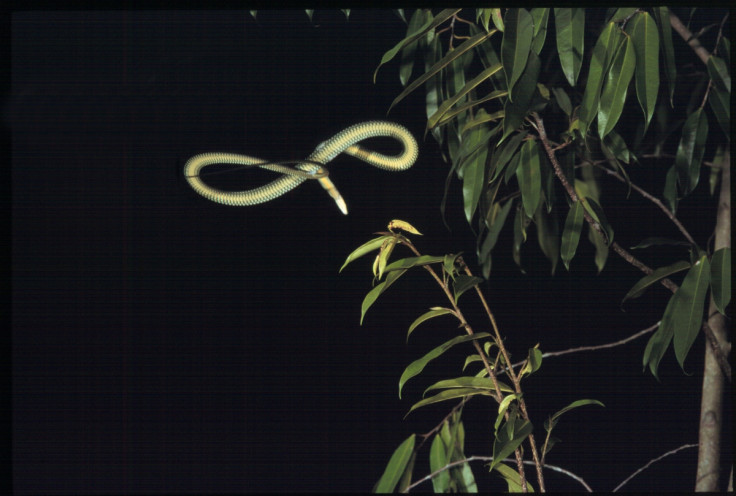Flying Snakes : Video of Serpent Slithering across the Sky Gives Clues to Natural Wonder
The mechanism that allows certain species of snake to "fly" has been documented by scientists.
Jake Socha, professor of engineering science and mechanics at Virginia Tech University, filmed snakes slithering in an 'S' shape across the sky and found that they could glide up to 30m from a tree.
Published in the Journal of Experimental Biology, Socha was looking to learn how an animal as seemingly unable to fly as a snake could glide so far.
"They look like they are swimming. They turn their whole body into one aerodynamic surface," he said.
Socha discovered that the snake's body works like an aerofoil to generate lift forces that keep them airborne.
He explained that they flex their ribs as they launch then stretch and flatten to change their profile from a circle into an arched semi-circle. "It looks like someone's version of a UFO," he joked.
He and his colleagues used a 3D printer to produce a rod with the same "UFO" cross section as the snake's body. They then placed it across a tank filled with water, which flowed over the snake-shaped bar.

Despite water being much denser than air, scientists could recreate the air conditions by passing the water over the model at specific speeds. Tilting the snake model at certain angles, the team were able to discover that it could generate enough lift to glide.
At 35 degrees, there was a huge spike in the lift of the snake model. They also found that when it was held level, it was pulled down, something which the researchers believe gives the snake control over its movements.
"Maybe the snake does hold part of its body flat at some point, using it as a mechanism for control," Socha said. Twisting the body may allow snakes to get precise flight control, the author added.
Socha said that the model did not accurately reflect that true abilities of snakes in flight.
"If you make a rough estimate of the lift-to-drag ratio for the real animal, it appears to do better than what we got from this study," he said.
"So even though this shape produced more lift than we were expecting, it doesn't get us the glide performance that snakes can attain, giving us a hint that there is something in what the animal is doing aerodynamically that is not captured by the cross-sectional shape alone."
© Copyright IBTimes 2025. All rights reserved.






















